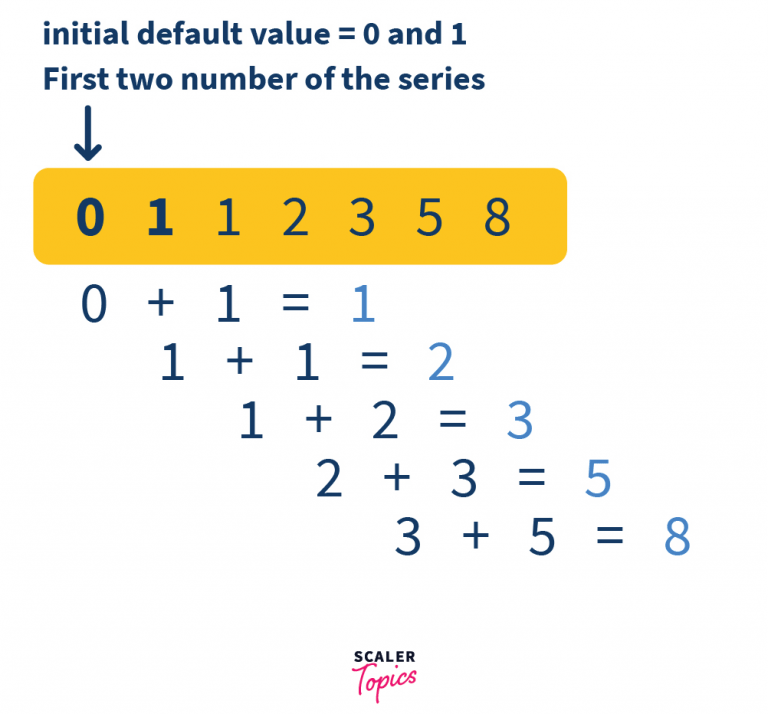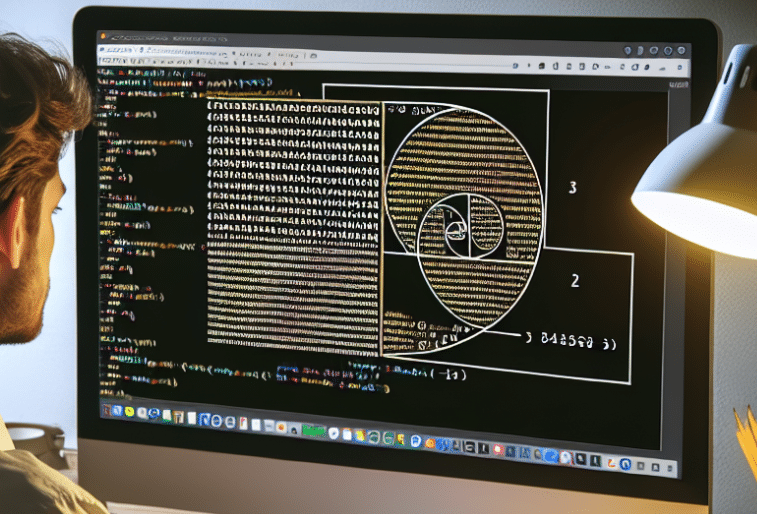Unlock the secrets of the Fibonacci series in Python with this comprehensive guide, perfect for beginners and experts alike.
Table of Contents
Introduction to the Fibonacci Series
We’ll start by talking about the cool number pattern called the Fibonacci Series and why it is super interesting.
What is the Fibonacci Series?
The Fibonacci Series is a sequence of numbers where each number is the sum of the two before it. It starts with 0 and 1, and then each subsequent number is the sum of the two numbers before it. So, it goes like this: 0, 1, 1, 2, 3, 5, 8, 13, and so on.
Discovering Fibonacci in Nature
The Fibonacci Series isn’t just a cool math concept; it actually shows up in nature too! You can find this number pattern in things like flowers, pinecones, shells, and even hurricanes. It’s like a secret code that nature uses to create amazing things!
Python Programming Basics
Python programming is a super cool way to write code and create new things. It’s like using a special language that computers understand to tell them what to do. Let’s dive into the basics of Python and see why it’s awesome for beginners!
Why Python is Awesome for Beginners
Python is a favorite language for beginners because it uses simple words and is easy to learn. It’s like learning a new language, but instead of talking to people, you’re talking to computers! With Python, you can write code that does all sorts of amazing stuff, like creating games, websites, or even solving math problems.
Writing Our First Python Code
When you want to write code in Python, you start by opening a program called an editor. This is where you’ll type out the instructions for the computer to follow. The cool thing about Python is that you can write your code using plain English words and phrases, which makes it easier to understand.
Understanding Algorithms
In the world of coding, an algorithm is like a set of instructions or a recipe that tells the computer how to solve a problem. Just like following a recipe to bake cookies, coding algorithms guide the computer step by step to perform specific tasks.

What is an Algorithm?
Simply put, an algorithm is a series of steps that need to be followed in a particular order to solve a problem. It’s like a roadmap that helps the computer reach the desired outcome. Algorithms are essential in coding because they provide a systematic way to tackle complex tasks efficiently.
The Algorithm of the Fibonacci Series
Now, let’s delve into the algorithm behind the Fibonacci Series. To generate the Fibonacci Series, the computer needs to follow a specific set of instructions:
1. Start with the first two numbers in the series, which are always 0 and 1.
2. Add the two previous numbers together to get the next number in the sequence.
3. Repeat this process to generate the entire Fibonacci Series.
By following these simple steps, the computer can generate the Fibonacci Series with ease. Understanding algorithms like this one is fundamental in coding and helps developers create efficient solutions to various problems.
Coding the Fibonacci Series in Python
Now that we understand the Fibonacci Series and how it works, let’s dive into the exciting part – coding it in Python! To generate the Fibonacci Series in Python, we can use a simple and elegant approach that follows the Fibonacci algorithm.
Here’s a basic Python code snippet that generates the Fibonacci Series:
“`python def fibonacci(n): a, b = 0, 1 for _ in range(n): print(a, end=’ ‘) a, b = b, a + b # Call the function to print the first 10 numbers in the Fibonacci Series fibonacci(10) “`
This Python code defines a function called `fibonacci` that takes a parameter `n`, which represents the number of Fibonacci numbers to generate. It then uses a loop to calculate and print the Fibonacci numbers up to the `n`th number.
Testing Our Fibonacci Code
After writing the Python code to generate the Fibonacci Series, it’s essential to test it to ensure it works correctly. By running the code snippet provided above, you can see the first 10 numbers of the Fibonacci Series printed in the console.
Testing the code helps us verify that our Python implementation of the Fibonacci algorithm is accurate and produces the expected results. Feel free to modify the code to generate a different number of Fibonacci numbers or experiment with different starting points to explore the fascinating patterns within the Fibonacci Series.
Recursive Fibonacci: A Deeper Dive
Recursion might sound like a big, fancy word, but it’s actually a pretty cool concept in coding. Think of it as a function that calls itself to solve a problem. It’s like a never-ending loop, but in a good way! Recursion can help simplify complex tasks into smaller, more manageable steps.

Coding Fibonacci Series Using Recursion
Now, let’s take a closer look at how we can use recursion to write our Fibonacci Series code. Instead of calculating each Fibonacci number from scratch, we can break down the problem into smaller sub-problems. By calling the Fibonacci function within itself, we can generate the sequence in a more elegant and efficient way.
Wrapping Up: What We Learned About Fibonacci and Python
Throughout our journey into the fascinating world of the Fibonacci Series and Python programming, we’ve uncovered some pretty amazing things. Let’s take a moment to recap all the cool stuff we’ve learned!
Exploring the Fibonacci Series
First, we delved into the secrets of the Fibonacci Series, a magical sequence of numbers where each number is the sum of the two preceding it. This pattern can be found all around us in nature, from flower petals to seashells.
Python Programming Basics
Next, we took a peek into the world of Python programming, a user-friendly language perfect for beginners. With simple words and easy-to-understand syntax, Python is a great starting point for anyone looking to dive into coding.
Understanding Algorithms
We also learned about algorithms, which are like recipes for solving problems in coding. By breaking down complex tasks into simple steps, algorithms help us achieve amazing feats in programming.
Coding the Fibonacci Series in Python
Then, we rolled up our sleeves and put our newfound knowledge to the test by writing Python code to generate the Fibonacci Series. With a few lines of code, we were able to bring this mathematical marvel to life right on our screen.
Recursive Fibonacci: A Deeper Dive
Lastly, we took a deep dive into recursion, a powerful concept in coding that allows us to write smarter and more efficient programs. By using recursion, we were able to enhance our Fibonacci Series code and make it even more awesome.
In conclusion, our adventure through the Fibonacci Series and Python programming has been nothing short of exciting. We’ve uncovered the beauty of mathematical patterns in nature, dived into the world of coding with Python, and explored advanced techniques like recursion. Remember, the world of coding is vast and full of wonders waiting to be discovered. Keep exploring, keep learning, and who knows what amazing things you’ll create next!
FAQs
Why do programmers like using Python?
Programmers love using Python because it’s a language that uses simple words and is easy to learn. This makes it perfect for beginners who are just starting to code. With Python, you can write code quickly and easily, making it a favorite among coders.
Can I see the Fibonacci Series outside of math and coding?
Yes, you can! The Fibonacci Series shows up in many places in nature, not just in math and coding. For example, you can find the Fibonacci sequence in the spiral shapes of shells, the petals of flowers, and even in the arrangement of seeds in a sunflower. It’s pretty cool how this math pattern appears in the world around us!
Is recursion the only way to write the Fibonacci Series in Python?
No, recursion is not the only way to write the Fibonacci Series in Python. There are actually different methods to code the Fibonacci Series, but recursion is a unique and interesting way to do it. Recursion is like a loop in the code that calls itself to solve a problem. While it may not be the only way, it’s definitely a cool technique to learn and use in coding!
